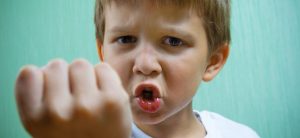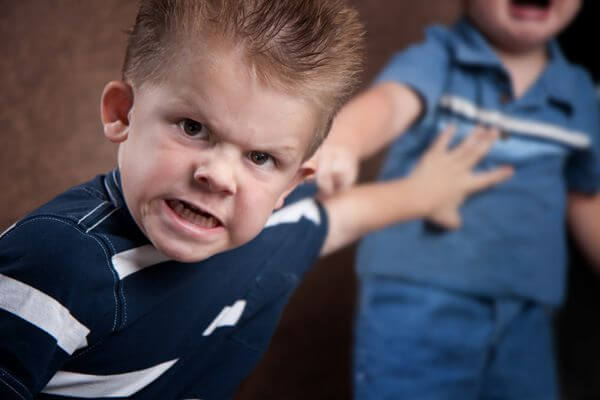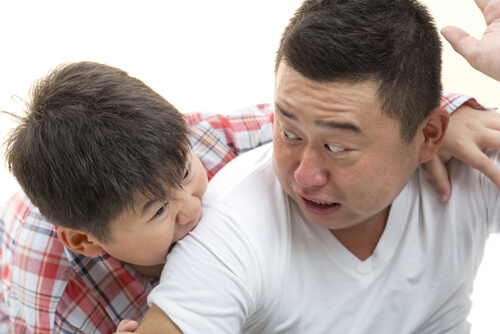How to Handle Children Who Hit and Bite

Why do some children attack others? How should you handle children who hit and bite?
These questions frequently appear in the minds of many mothers and fathers who are concerned about their children’s seemingly aggressive reactions.
Aggression at an early age
The first thing that should be emphasized is that this aggressiveness is natural and normal in the very young. It is an instrumental aggressiveness, because the child has an objective: to obtain something that he wants.
For example, if he wants a toy that someone else has, he may hit and bite, or push other children in order to get it. It is not his intention to harm others, but rather to obtain the toy.
Young children do not have a complete command of language skills. This condition is linked to the fact that they live in a stage of development in which they are centered on themselves. It is called the egocentric stage and prevents them from taking into account the needs of others.
To communicate what they want and feel, the children try different mechanisms. But some of these mechanisms are not suitable for a happy coexistence. When they know no other way, children communicate by hitting and biting.
Being clear about how to handle children who hit and bite is very important in order to promote a healthy emotional development. With this approach, the adult will be positioned to teach the child how to socialize and how to communicate his wishes.

Suggestions for acting in front of children who hit and bite
You must act as soon as the aggressive moment occurs. The adult in charge – the teacher, mother, father, nanny, etc. – should reassure the child and talk to him. This will let him know that you understand what happened to him, and that his response was inadequate.
If the child is not able to communicate his emotions with words, the adult must do so instead. It’s time for phrases like, “You’re angry, right?” This way the child will feel understood. Next, the consequences must come. The adult should clearly say, “You must not hit or bite anyone, because you cause harm.”
Penance
Once the child has calmed down, he should be made to understand that his reaction requires penance or a repairing action. “I understand that you feel something is wrong because your friend did not give you what you wanted. The problem is that you should not hit or bite anyone. You should ask for forgiveness.”
Timely teachings
- A very important step that should not be omitted is to teach your child that there are alternative ways to express their desires: “When you want something, you must say so with words, kindly.” It is about making him understand that there are other ways to communicate his anger or his desires.
- It is also an opportune time to teach patience and the ability to wait. “If another child is playing with a toy you want, you can wait for it to be dropped and then play with it.”

Some “no’s” to consider
- When intervening in a situation where a child reacts aggressively, the adult must control her emotions. This especially means not shouting or getting angry. If the adult acts with violence, the child learns to react with violence.
- Hurried and pressured by the pace of life today, many parents tend to give a pass to children who hit. To quickly appease the child’s anger, the father or mother lets themselves be manipulated, and they consent to what the child wants. This is a serious mistake, because the child will get used to using aggressive behavior to get what he wants. Do not give in to whims. Time and dedication are the right tools to educate children who hit.
Tend to emotional education
Correct emotional development requires adults to model behavior and to intervene. This will allow the child to achieve the appropriate level of emotional intelligence. An emotionally balanced home environment is the foundation. Children learn from models, and the family is always the primary model. Children also spend several hours in school, and therefore we must demand a favorable, non-violent climate there as well.
Developing emotional skills will allow children who hit and bite to overcome that stage. They can assimilate and understand their own emotions and those of others to acquire enough skills to regulate their own moods. This will largely influence their integration into society.
All cited sources were thoroughly reviewed by our team to ensure their quality, reliability, currency, and validity. The bibliography of this article was considered reliable and of academic or scientific accuracy.
- Maza, B. (2016). Donde nace la palabra. Revista de la Asociación Peruana de Psicoterapia Psicoanalítica de Niños y Adolescentes, 43. https://apppna.org/wp-content/uploads/2016/11/Transiciones-20-digital-actualizada.pdf#page=43
- Tremblay, R. E. (2003). Los orígenes de la violencia de los jóvenes. http://e-spacio.uned.es/fez/view/bibliuned:AccionPsicologica2003-numero1-0006
- Peñafiel-Balmaseda, J. (2013). Mordedores en pañales. Análisis de las causas y propuesta educativa (Bachelor’s thesis). https://reunir.unir.net/handle/123456789/1621
This text is provided for informational purposes only and does not replace consultation with a professional. If in doubt, consult your specialist.








